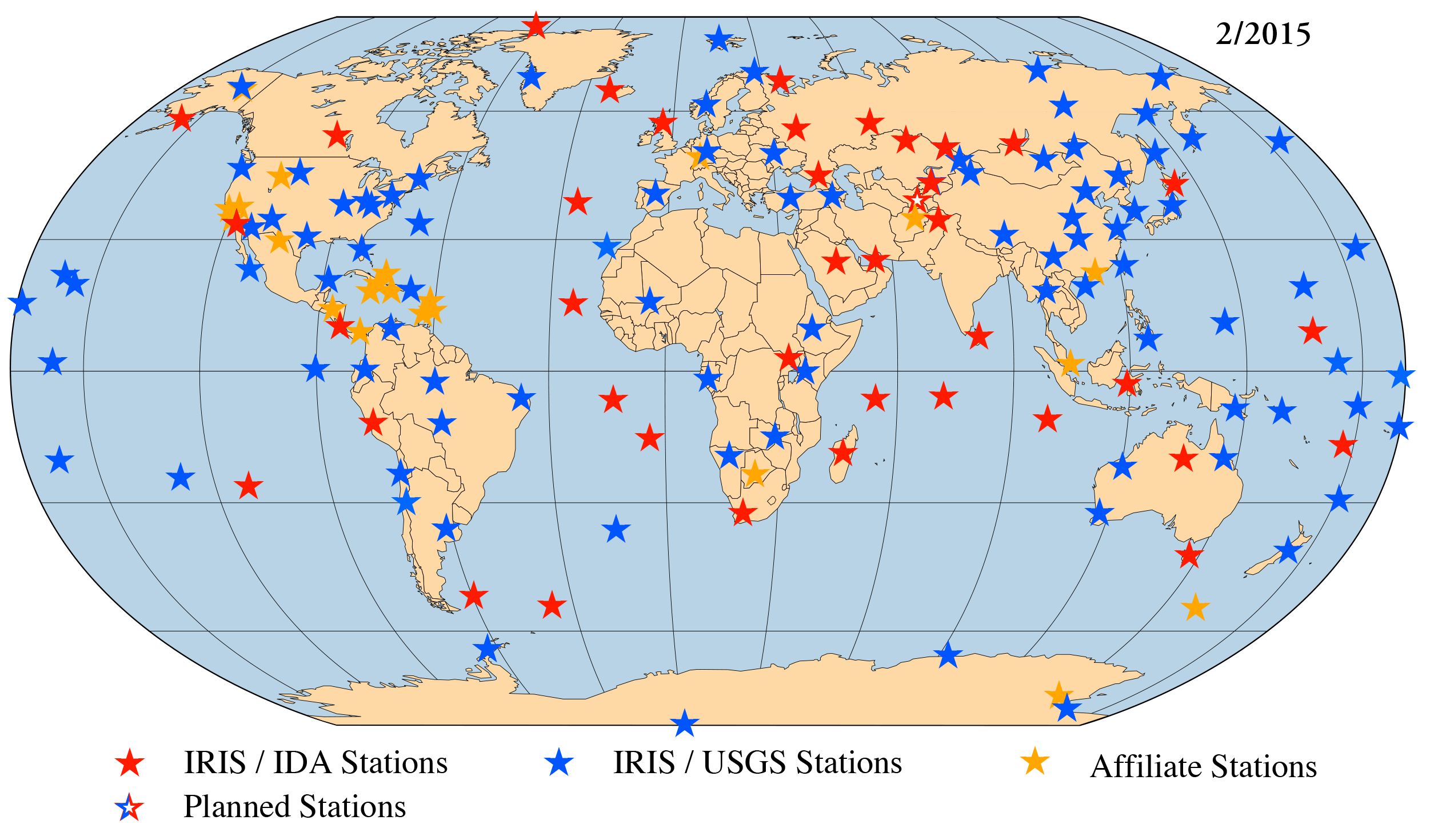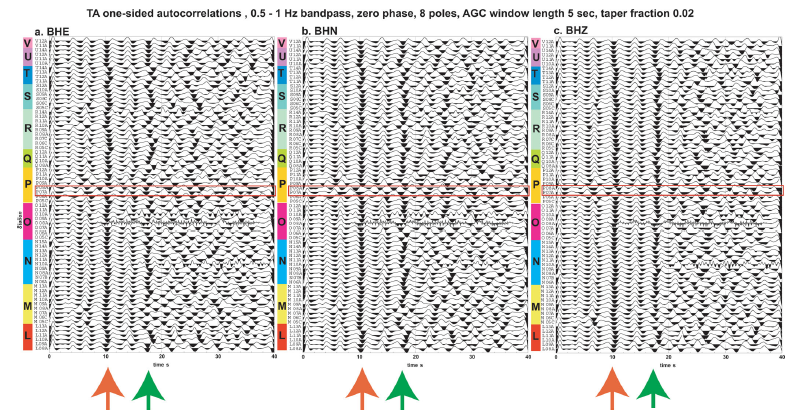Global crustal structure from ambient noise autocorrelations
Dr. Sebastian Rost and George Taylor
Traditionally the seismic wavefield has been divided into signal, used for seismic imaging, and noise, any other energy arriving at a seismic station. The seismic ambient noise field, typically recorded at times outside of transient seismic events, consists of random ground motions mainly related to the interaction between the oceans and atmosphere and the solid Earth and the remnants of earthquake related seismic energy scattered in the Earth several times that remains recordable for several hours. The noise field shows several spectral peaks, known as the microseismic peaks, where the noise field is most energetic, which can be related to physical processes in the oceans and atmosphere.
In recent years seismologists realized that the so far unused ambient noise field can be used to image the Earth without the energy from earthquakes or controlled sources. Through the use of cross-correlation of the ambient noise field recorded at two separated stations it is possible to retrieve the impulse response of the Earth between these stations (Greens function) that can be used to resolve Earth structure. Nonetheless, stacking of many hours (up to several years) of data is necessary to improve the signal to noise ratio of the Greens function. This technique has been used to image the Earth on many different scale lengths from the imaging of hydrocarbon reservoirs to global tomography.

Figure 1: Station distribution of the Global Seismographic Network. Stations are deployed globally with a station spacing of 2000 km or less. Stations are located in a variety of tectonic regions giving us a good insight into different crustal and upper mantle structure in different tectonic regions.
Another approach to resolve the Earth structure at a station is using the autocorrelation of the seismic wavefield at a station. The resultant Greens function is the Earth’s impulse response underneath the single station, similar to a zero-offset Common Depth Point stack. Although the first experiments using ambient noise were using this technique it has not been used extensively yet.
This project will use the data from stations from the Global Seismographic network (GSN – Figure 1). The GSN consists of 150+ stations installed globally (https://www.iris.edu/hq/programs/gsn) and many of the stations have been operating for several decades. The GSN data quality and availability is excellent providing a high quality dataset for ambient noise auto-correlations. The stations are deployed in a variety of tectonic regions (both oceanic and continental). Using the ambient noise autocorrelations (Figure 2) will allow us to resolve Earth features such as the Mohorovicic discontinuity, the Lithosphere-Asthenosphere Boundary and hopefully deeper mantle structures. We will use the auto-correlations to understand the structure in different tectonics regions.

Figure 2: (a-c) Filtered autocorrelations (0.5-1 Hz) of US-Array stations (Tibuleac and von Seggern, 2012). Red Arrows mark the P-wave Moho reflection (PmP), with the green arrow depicting the S-wave Moho reflection (SmS).
During the internship the student will collect data from international data centers, and will be introduced to the necessary data processing and will contribute to software development, if appropriate. The student will work on the data display and the interpretation. The student will be part of the Tectonics Research Group of the School of Earth and Environment in Leeds and will meet regularly with members of the Group and supervisors. We expect that the student will prepare a short report based on the research and will present within the Tectonics research group.
The project will be suitable for students with a background in Geophysics, Physics and Mathematics with an interest in the Geosciences and Tectonics.
References and further reading:
- Curtis, A., Gerstoft, P., Sato, H., Snieder, R., Wapenaar, K., 2006. Seismic interferometry—turning noise into signal. The Leading Edge 25, 1082–1092. doi:10.1190/1.2349814
- Galetti, E., Curtis, A., 2012. Generalised receiver functions and seismic interferometry. Tectonophysics 532–535, 1–26. doi:10.1016/j.tecto.2011.12.004
- Tibuleac, I.M., von Seggern, D., 2012. Crust–mantle boundary reflectors in Nevada from ambient seismic noise autocorrelations. Geophys. J. Int. 189, 493–500. doi:10.1111/j.1365-246X.2011.05336.x
- Wegler, U., Sens-Schönfelder, C., 2007. Fault zone monitoring with passive image interferometry. Geophysical Journal International 168, 1029–1033. doi:10.1111/j.1365-246X.2006.03284.x
- Zhang, J., Gerstoft, P., Shearer, P.M., 2009. High-frequency P-wave seismic noise driven by ocean winds. Geophys. Res. Lett. 36, L09302. doi:10.1029/2009GL037761















